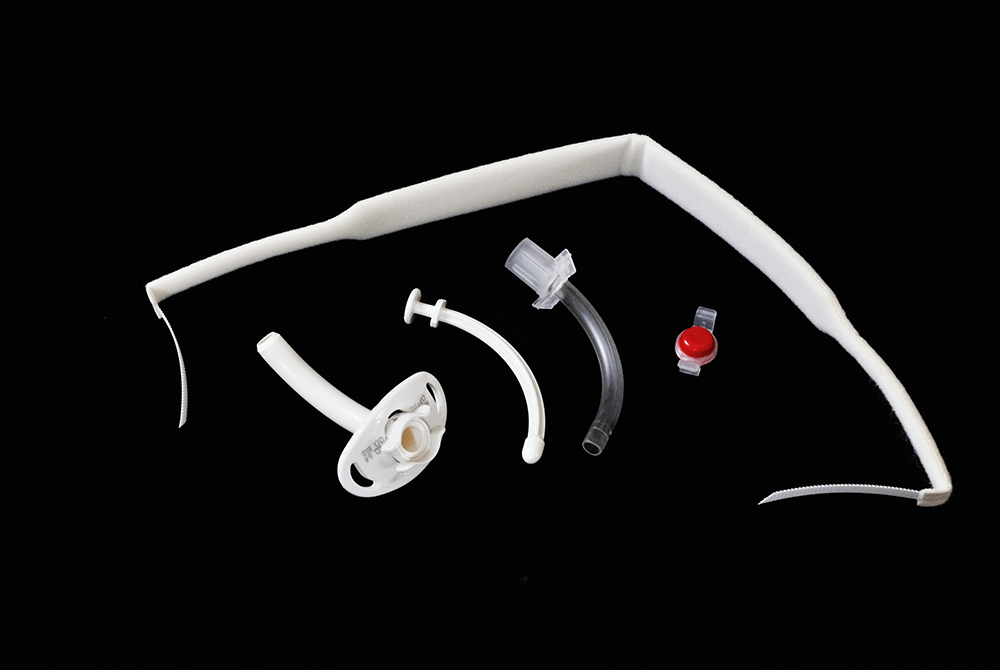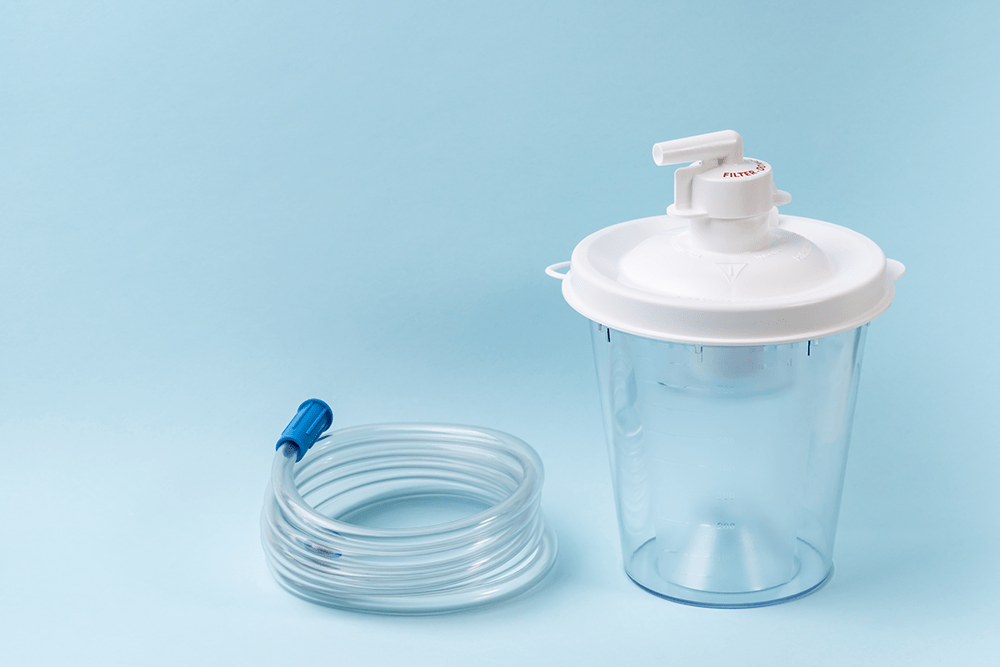
Introduction: Essentials for Tracheostomy Care at Home
Providing at-home tracheostomy care essentials is an important responsibility for caregivers managing a loved one’s airway outside a clinical setting. Daily trach care helps maintain breathing comfort, reduce the risk of infection, and respond quickly to respiratory issues.
Preparing for trach care outside the hospital requires a complete understanding of the necessary supplies and how to use them properly. Caregivers must learn to balance clinical procedures with personal comfort and emotional support. From cleaning routines to suction equipment, each item plays a role in promoting safety and comfort.
This guide outlines basic supplies for tracheostomy management so caregivers can stay ready for routine care and emergencies alike. Having the right tools supports better outcomes and peace of mind for families.
Click a link to jump to the section.
1. Tracheostomy Tubes
Best tracheostomy tubes for home use come in various styles to support different medical needs. The most common types include:
- Cuffed tubes: Help prevent aspiration and support ventilator use. They are typically used when a patient is unable to protect their airway.
- Uncuffed tubes: Allow airflow around the tube and are often used in stable patients who can breathe on their own.
- Fenestrated tubes: Have small openings to allow speech and airflow through the upper airway. These are helpful for patients who are transitioning off ventilation and beginning to speak.
Choosing the right size and style ensures proper breathing support and long-term comfort at home. Caregivers should monitor for signs of discomfort, air leaks, or difficulty speaking, which may indicate that an adjustment is needed.


2. Inner Cannulas
Inner cannula replacement supplies are essential for daily trach maintenance. Inner cannulas are available in disposable or reusable styles and are inserted into the outer trach tube to collect mucus and debris.
Using replaceable cannulas simplifies cleaning and minimizes the need to remove the entire trach tube. This also reduces the risk of infection and supports routine hygiene. For reusable styles, caregivers should follow cleaning instructions carefully and inspect cannulas for signs of damage or buildup.
3. Tracheostomy Tube Holders or Ties
Trach tube holders and neck ties secure the tracheostomy tube in place and prevent movement or accidental dislodgement. These soft straps or fasteners wrap around the neck and attach to the tube’s flanges.
Options include Velcro closures, foam padding, and moisture-wicking materials designed for sensitive skin. Selecting comfortable, secure holders helps reduce skin irritation and maintains proper positioning. It is important to check the neck area daily for pressure marks or redness and adjust the strap tension accordingly.
4. Suction Catheters
Home suctioning best practices start with having the right catheter size and technique. Portable suction devices for trach patients often include flexible, single-use catheters available in different French sizes to suit individual needs.
These tools are essential for removing mucus and improving airway clearance. Having a variety of sizes on hand ensures appropriate suctioning for children or adults. Suctioning should be done gently to avoid damaging airway tissues, and hands should be washed thoroughly before handling supplies.
5. Portable Suction Machine
A portable suction unit is one of the most important pieces of equipment for tracheostomy care. These compact machines remove secretions between meals, overnight, or during breathing distress episodes.
Portable suction devices for trach patients should be lightweight, rechargeable, and easy to operate. Key features include adjustable suction levels, built-in canisters, and compatibility with various catheter types. Battery life and portability are especially important when leaving the home or preparing for emergency evacuation.


6. Heat Moisture Exchangers (HMEs)
Heat moisture exchangers for trach comfort play a vital role in maintaining airway hydration. HMEs capture moisture from exhaled air and return it during inhalation, mimicking natural nose and mouth functions.
These devices help reduce dryness, coughing, and irritation caused by dry air. They are useful in cold or low-humidity environments and should be replaced according to manufacturer guidelines. Some HMEs also include filters to reduce exposure to airborne particles or pathogens.
7. Sterile Saline Solution
Sterile saline for suctioning loosens thick mucus and improves suction efficiency. It may be instilled into the trach tube before suctioning or used to flush the suction catheter during cleaning.
Saline is also helpful for rinsing reusable equipment and keeping the airway hydrated. Caregivers should use unit-dose vials to avoid contamination and store unopened containers in a clean, dry place. Never reuse opened saline vials across multiple days.
8. Cleaning and Sterilization Supplies
Tracheostomy cleaning kits and tools are vital for maintaining hygiene. These may include small brushes for cleaning inner cannulas, disinfecting solutions, and sterile containers for soaking reusable parts.
Daily trach hygiene tips include washing hands before cleaning, using separate tools for each patient, and cleaning in a dedicated, sanitized area. Preventing infection in trach patients starts with following a regular schedule and watching for signs of redness, odor, or discharge around the stoma site.
9. Tracheostomy Dressings and Split Gauze
Gauze and dressings for tracheostomy care keep the stoma area clean and dry. Split gauze fits around the base of the tube and helps absorb moisture, reduce friction, and protect the skin.
Dressings should be changed at least once daily or more often if they become damp or soiled. The skin under the dressing should be monitored for breakdown or irritation. For sensitive skin, hypoallergenic or antimicrobial dressings may be beneficial.
10. Emergency Backup Supplies
Backup trach tube kits are essential for every home care setup. These kits typically include an extra tube of the same size and type, an obturator for insertion, a spare inner cannula, gloves, and lubricant.
Emergency supplies for airway management also include suction accessories, saline, a manual resuscitator bag, and a copy of the patient's care plan. Being prepared for trach-related complications ensures that caregivers can act quickly in emergencies such as tube dislodgement, mucus plugs, or equipment failure. Keep the kit accessible and review it monthly to ensure everything is stocked and functional.
Conclusion: Be Prepared with the Right Tracheostomy Supplies
Managing tracheostomy care at home requires careful planning, organization, and reliable tools. Each item—from tubes and suction devices to HMEs and dressings—helps protect respiratory function, promote comfort, and minimize infection risk.
Caregivers are encouraged to build a consistent routine, maintain emergency supplies, and work closely with medical professionals for ongoing guidance. Explore tracheostomy supplies at Vitality Medical for trusted supplies that support safe and confident care at home.

Login and Registration Form